-
 Bitcoin
Bitcoin $116200
1.84% -
 Ethereum
Ethereum $3841
6.86% -
 XRP
XRP $3.070
4.25% -
 Tether USDt
Tether USDt $1.000
0.02% -
 BNB
BNB $774.4
1.72% -
 Solana
Solana $172.3
5.17% -
 USDC
USDC $0.9999
0.01% -
 Dogecoin
Dogecoin $0.2136
6.85% -
 TRON
TRON $0.3391
1.21% -
 Cardano
Cardano $0.7667
5.76% -
 Hyperliquid
Hyperliquid $39.10
4.30% -
 Sui
Sui $3.724
9.37% -
 Stellar
Stellar $0.4139
5.86% -
 Chainlink
Chainlink $17.35
6.09% -
 Bitcoin Cash
Bitcoin Cash $573.7
2.52% -
 Hedera
Hedera $0.2518
5.39% -
 Ethena USDe
Ethena USDe $1.001
0.02% -
 Avalanche
Avalanche $22.68
3.57% -
 Litecoin
Litecoin $120.4
3.89% -
 UNUS SED LEO
UNUS SED LEO $8.951
-0.40% -
 Toncoin
Toncoin $3.312
4.62% -
 Shiba Inu
Shiba Inu $0.00001263
4.23% -
 Uniswap
Uniswap $10.14
6.89% -
 Polkadot
Polkadot $3.778
5.04% -
 Dai
Dai $1.000
0.01% -
 Monero
Monero $276.9
-4.52% -
 Bitget Token
Bitget Token $4.394
1.57% -
 Cronos
Cronos $0.1475
6.05% -
 Pepe
Pepe $0.00001081
5.27% -
 Aave
Aave $274.5
7.59%
What is the blockchain technology of BENQI (QI) currency?
Built on Avalanche's fast and scalable blockchain, BENQI's innovative features, including isolated lending pools and cross-chain lending, empower users with flexible and efficient liquidity solutions.
Dec 24, 2024 at 06:31 pm
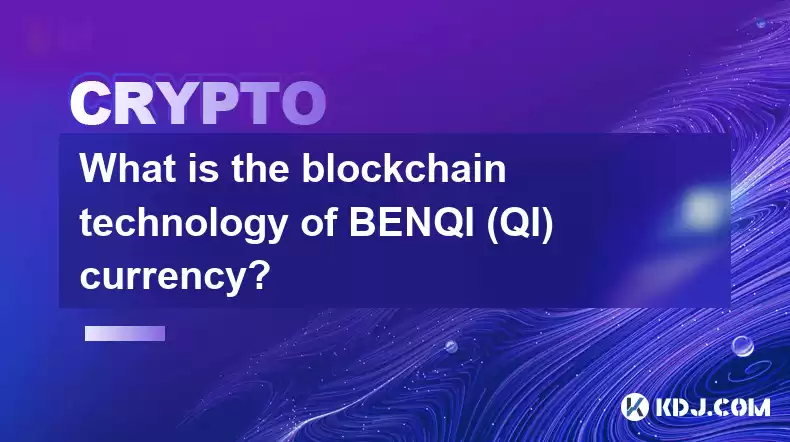
Key Points:
- BENQI (QI) is a decentralized, non-custodial liquidity market protocol built on the Avalanche blockchain.
- QI token is the native token of the BENQI protocol, used for staking, governance, and rewards distribution.
BENQI's unique features include:
- Isolated Lending Pools: Users can create custom lending pools with specific lending and borrowing parameters.
- Stablecoin-Weighted Interest Rates: Interest rates are determined by the supply and demand of stablecoins in each pool.
- Cross-Chain Lending: Users can access BENQI's lending and borrowing services across multiple blockchain networks.
Blockchain Technology of BENQI (QI) Currency:
1. Layer-1 Avalanche Blockchain:
QI is built on the Avalanche blockchain, which offers:
- Fast Transaction Times: Avalanche enables near-instant transaction confirmations, ensuring quick and efficient liquidity operations.
- Scalability: Avalanche has a highly scalable architecture, allowing for high transaction volumes without congestion.
- Proof-of-Stake Consensus: Avalanche utilizes a proof-of-stake consensus mechanism, promoting energy efficiency and security.
2. Isolated Lending Pools:
BENQI's innovative isolated lending pools empower users with:
- Customizable Parameters: Borrowers and lenders can set specific interest rates, loan terms, and collateral requirements for each pool.
- Risk Management: The isolation of lending pools helps mitigate risks by segregating liquidity from other pools.
- Tailored Lending: Isolated pools enable users to create lending pools tailored to their specific needs and risk profiles.
3. Stablecoin-Weighted Interest Rates:
BENQI utilizes a unique interest rate mechanism based on stablecoin supply and demand:
- Stablecoin Supply and Demand: Interest rates in each pool are determined by the equilibrium between the supply of stablecoins deposited by lenders and the demand for stablecoins borrowed by borrowers.
- Market-Driven Rates: The algorithm automatically adjusts interest rates to maintain a stable and efficient lending market.
- No Volatility Risk: Stablecoin-weighted interest rates minimize the impact of market volatility on loan repayments.
4. Cross-Chain Lending:
BENQI's cross-chain lending feature facilitates:
- Multi-Chain Access: Users can access BENQI's services from multiple blockchain networks, such as Avalanche, Ethereum, and Polygon.
- Increased Liquidity: Cross-chain lending expands the available liquidity pool, providing users with more borrowing and lending opportunities.
- Interoperability: BENQI's cross-chain compatibility enhances interoperability within the decentralized finance (DeFi) ecosystem.
FAQs:
1. What is the use case of QI token?
QI token is used for staking, governance, and rewards distribution on the BENQI platform. Staking QI allows users to earn rewards, participate in governance proposals, and gain access to exclusive features.
2. How can I earn rewards on BENQI?
You can earn rewards on BENQI by staking QI tokens, lending stablecoins to liquidity pools, or borrowing stablecoins from liquidity pools. The reward rate varies depending on the pool and the amount of QI staked.
3. What is the difference between BENQI and other DeFi protocols?
BENQI's isolated lending pools, stablecoin-weighted interest rates, and cross-chain lending features differentiate it from other DeFi protocols. These features provide users with a unique combination of flexibility, risk management, and interoperability.
Disclaimer:info@kdj.com
The information provided is not trading advice. kdj.com does not assume any responsibility for any investments made based on the information provided in this article. Cryptocurrencies are highly volatile and it is highly recommended that you invest with caution after thorough research!
If you believe that the content used on this website infringes your copyright, please contact us immediately (info@kdj.com) and we will delete it promptly.
- Ollama Turbo & GPT-OSS: Revolutionizing AI Model Accessibility and Speed
- 2025-08-07 20:29:33
- Bitcoin Ordinals: NFTs Evolving Bitcoin or a Fleeting Fad?
- 2025-08-07 20:29:33
- BlockchainFX, Bitcoin Swift, Crypto Presales: What's the Hype?
- 2025-08-07 19:10:13
- Pepe Dollar (PEPD) vs. SPX6900: The Meme Coin Battle of 2025
- 2025-08-07 19:50:12
- XRP Investment Regret: Are You Missing Out on the Next Big Thing?
- 2025-08-07 19:50:12
- XRPINU: More Than Just a Meme? Roadmap, Liquidity, and the Future of Funny Money
- 2025-08-07 19:56:46
Related knowledge

Where can I buy UMA (UMA)?
Aug 07,2025 at 06:42pm
Understanding UMA and Its Role in Decentralized FinanceUMA (Universal Market Access) is an Ethereum-based decentralized finance (DeFi) protocol design...
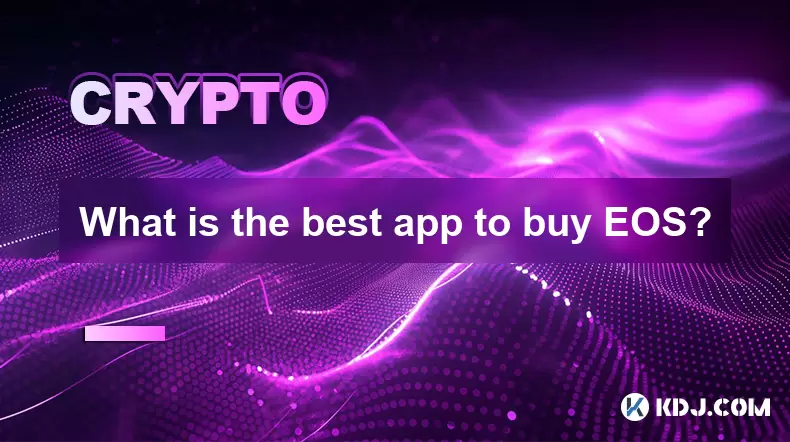
What is the best app to buy EOS?
Aug 07,2025 at 04:35pm
Understanding EOS and Its Role in the Cryptocurrency EcosystemEOS is a blockchain platform designed to support decentralized applications (dApps) with...
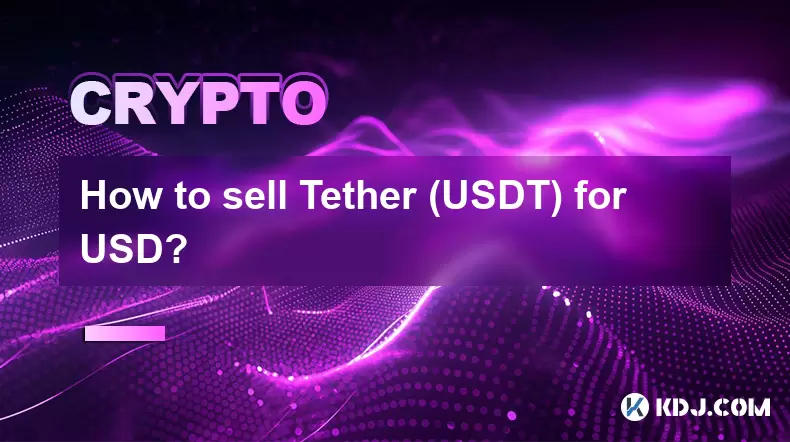
How to sell Tether (USDT) for USD?
Aug 07,2025 at 03:29pm
Understanding Tether (USDT) and Its USD ValueTether (USDT) is a stablecoin designed to maintain a 1:1 value ratio with the United States Dollar (USD)....
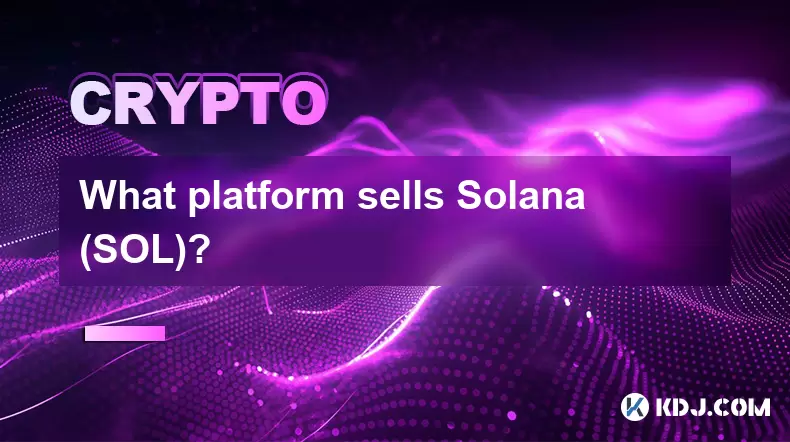
What platform sells Solana (SOL)?
Aug 07,2025 at 08:50pm
Where to Buy Solana (SOL) – Trusted Cryptocurrency ExchangesWhen looking to purchase Solana (SOL), the most common and secure method is through reputa...
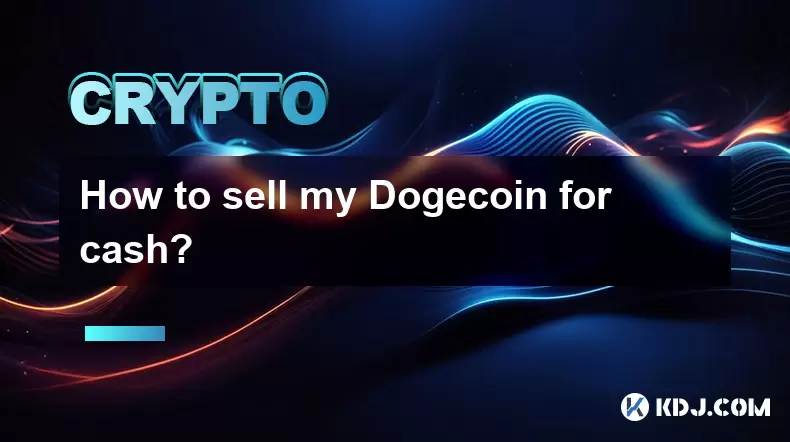
How to sell my Bitcoincoin for cash?
Aug 07,2025 at 02:14pm
Understanding the Basics of Selling Dogecoin for CashSelling Dogecoin for cash involves converting your DOGE tokens into a fiat currency such as USD, ...

What is Chainlink (LINK)?
Jul 22,2025 at 02:14am
Understanding Chainlink (LINK): The Decentralized Oracle NetworkChainlink is a decentralized oracle network designed to bridge the gap between blockch...

Where can I buy UMA (UMA)?
Aug 07,2025 at 06:42pm
Understanding UMA and Its Role in Decentralized FinanceUMA (Universal Market Access) is an Ethereum-based decentralized finance (DeFi) protocol design...

What is the best app to buy EOS?
Aug 07,2025 at 04:35pm
Understanding EOS and Its Role in the Cryptocurrency EcosystemEOS is a blockchain platform designed to support decentralized applications (dApps) with...

How to sell Tether (USDT) for USD?
Aug 07,2025 at 03:29pm
Understanding Tether (USDT) and Its USD ValueTether (USDT) is a stablecoin designed to maintain a 1:1 value ratio with the United States Dollar (USD)....

What platform sells Solana (SOL)?
Aug 07,2025 at 08:50pm
Where to Buy Solana (SOL) – Trusted Cryptocurrency ExchangesWhen looking to purchase Solana (SOL), the most common and secure method is through reputa...

How to sell my Bitcoincoin for cash?
Aug 07,2025 at 02:14pm
Understanding the Basics of Selling Dogecoin for CashSelling Dogecoin for cash involves converting your DOGE tokens into a fiat currency such as USD, ...

What is Chainlink (LINK)?
Jul 22,2025 at 02:14am
Understanding Chainlink (LINK): The Decentralized Oracle NetworkChainlink is a decentralized oracle network designed to bridge the gap between blockch...
See all articles

























































































